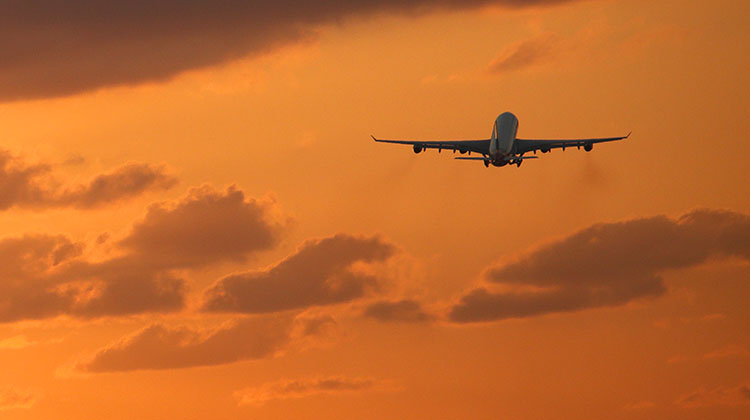
While the mood among the chief executives is likely to be upbeat as they prepare to gather in Sydney for the International Air Transport Association (IATA) annual general meeting next week, that enthusiasm is being tempered by the rise in global oil prices that threatens to crimp profitability in the year ahead.
That’s the view of IATA director general and chief executive Alexandre de Juniac, who notes the price of Brent crude oil has moved up to within touching distance of US$80 a barrel in recent times, compared with being in the vicinity of US$60 a barrel at the start of the year.
And that will undoubtedly impact on the bottom line, despite the growth in passenger numbers around the world.
“The solid demand growth is one of the reasons why you will see many of the CEO’s gathering here in a good mood,” de Juniac told an Australasian Aviation Press Club lunch in Sydney on Thursday.
“But they will certainly be worried about the rising cost of fuel.”
In December, IATA forecast airlines around were expected to collectively post US$38.4 billion in profits in calendar 2018 amid strong passenger demand and an improvement in the cargo sector.
The figure represented an improvement from the US$34.5 billion estimated profit for 2017.
de Juniac said rising oil price – fuel makes up about 30 per cent of an airline’s total costs – would have an impact on profitability.
And although efforts to improve efficiencies and cut costs would help offset some of the impact of the movement in oil prices, the industry’s collective profit was likely to be lower in 2018 than last year.
“In the past, such a rapid rise in a key input cost might have plunged the industry back into losses,” de Juniac said.
“As a result of the efforts of the industry to restructure and re-engineer their businesses, we are still expecting solid profits this year.
“But probably not at the level we were anticipating in December.”

IATA’s latest forecasts for industry profitability is due to be published at the IATA AGM on Monday.
de Juniac said the rising fuel price would “significantly” impact airline profits from 2019.
“We are probably at the peak of the cycle,” he said.
“Next year we don’t know yet but probably less positive.”
Locally, Qantas has guided the market to expect underlying profit before tax in the range of $1.55 billion and $1.6 billion for the 12 months to June 30 2018. If the result is in line with guidance, it would represent an improvement of up between 10 and 14 per cent from underlying PBT of $1.40 billion in 2016/17.
Virgin Australia has not provided the market with specific earnings guidance. In February, the airline said it was expecting the underlying performance for the second half of 2017/18 to improve compared with the prior corresponding period.
AIRPORT PRIVATISATION
de Juniac also made a contribution to the current debate in Australia regarding the regulation of the nation’s airports, referring to the Australian Competition and Consumer Commission (ACCC) reported concerns about how effectively the current arrangements constrain their market power.
Further, he said IATA was working with the lobby group Airlines for Australia and New Zealand (A4ANZ) and the Board of Airline Representatives of Australia (BARA) on submissions for the Productivity Commission’s inquiry into airports expected to be launched later in 2018.
“Anyone who has travelled knows that it is cheaper today that it was a decade ago, but airlines have not seen similar decreases in their airport costs,” de Juniac said.
“The difference is that airlines operate in a competitive environment and airports have much more market power. So we must find an effective regulatory solution to ensure that Australia is well-served with competitive infrastructure.”
de Janice repeated comments he has said previously that airport privatisation has proven to be a failure around the world.
Earlier in May, the A4ANZ lobby group released a report that concluded light-handed regulation of Australia and New Zealand’s airports had been ineffective at protecting consumers from higher charges due to their monopoly power.
Further, it called for reforms to the regulatory regime that would support genuine commercial negotiations between airlines and airports to effect fair outcomes for airport users.
The Australian Airports Association (AAA) said in response to the A4ANZ report the current regulatory regime for Australian airports had served airlines, airports, Australian and overseas travellers and the broader economy extremely well.
Also, de Juniac welcomed the progress being made at the proposed second Sydney airport at Badgerys Creek
“We are very pleased with the level of consultation that continues with the airline community,” de Juniac said.
“This includes assurances that airlines will be able to chose the airport they serve and the phased approach to development.
“What we need to work on next is a vision for the roles of Badgerys Creek and Kingsford Smith and the connectivity between the two airports. This will help airlines to plan effectively their future services.
“As phase one of Badgerys Creek will not be ready before 20206 there is an urgent need to find ways to use Kingsford Smith to its full capabilities.”
The IATA AGM kicks off in Sydney on Sunday and runs until Tuesday. The association represents about 280 carriers worldwide, or 83 per cent of total air traffic. Up to 130 chief executives are expected to be in attendance.
Sydney is playing host to the IATA AGM for the third time, having previously held the event in 2000 and 1961.










